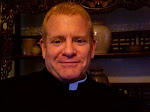
Daily Images of God--Lent 2022
Day 25
March 26
THE ALL-NURTURER
“And Jacob said to Joseph, “El Shaddai appeared to me at Luz in the land of Canaan, and He blessed me, and said to me, ‘I will make you fertile and numerous…’ And Shaddai who blesses you…blessings of the breast and womb.” Genesis 48:3-4; 49:25
“God also spoke to Moses and said to him: ‘I am the Lord. I appeared to Abraham, Isaac, and Jacob as El Shaddai, but I did not make Myself known to them by my name Yahweh.” Exodus 6:3
One of the most ancient ways of referring to God in the Hebrew Scriptures is El Shaddai (אֵל שַׁדַּי), or just Shaddai. El means “God” or “El,” the supreme god of the ancient Canaanite pantheon. El Shaddai is often translated as “God Almighty” from how it shows up in the Latin Vulgate, Deus Omnipotens, understanding Shaddai as a form of the Semitic root sh-d-d (שדד) “to overpower, destroy, make desolate” and seeing God as something like Shiva the Destroyer in the Hindu pantheon. But El Shaddai occurs often in passages removed from martial imagery that speak of fertility and care of one’s offspring. A more likely reading sees Shaddai as coming from the two-letter Semitic root sh-d (שד) “mound, breast.” Hebrew, in addition to having a singular (for one) and plural (for many) form of a noun, also has a dual form (for two) that doubles the second letter of a two-letter root. Shaddai as a dual thus means “of the two mounds.” Though perhaps a local designation (El of the Two Mountains) from the Northern Mesopotamia from where Abram came, many scholars now agree that this very ancient nomen divinum probably goes back as far as the late stone age, when most of Europe and the Middle East shared a matriarchal cult of the Mother Goddess, known to us most graphically in the Venus of Willendorf.
In its earliest form, El Shaddai meant God of the Two Breasts or The God who Suckles, i.e., The Nurturer. Male sky gods from the middle of the Eurasian continent would later come to dominate religion in the area; this included Hebrew worship of Yahweh. In Iron Age Palestine, the two breasted god was often seen as a consort or perhaps female avatar of El, Baal, or even Yahweh, going by the name Asherah. As Yahwism grew and became more monotheistic, the cult of Asherah was suppressed.
El Shaddai as a very ancient way of talking about God persisted through all this. It is probably best understood as “God the All Nurturing One,” not “God the Almighty.” The idea is not that God has the power to do anything, but rather that there is no situation, no matter how bad, where God cannot help and sustain us. The Greek equivalent, Θεός Παντοκράτωρ (theos pantokratōr), thus would be a combination of παντός pantos “all” not with κράτος kratos “strength/might,” but rather with κρατεῖν kratein “hold/ sustain.”
Image: A Judean pillar figurine found in Lachish, Israel (modern Tell ed-Duweir) dating from the 8th-7th century BCE (Iron Age II), ceramic, 18.1 cm x 8.6 cm. Metropolitan Museum of Art.












No comments:
Post a Comment